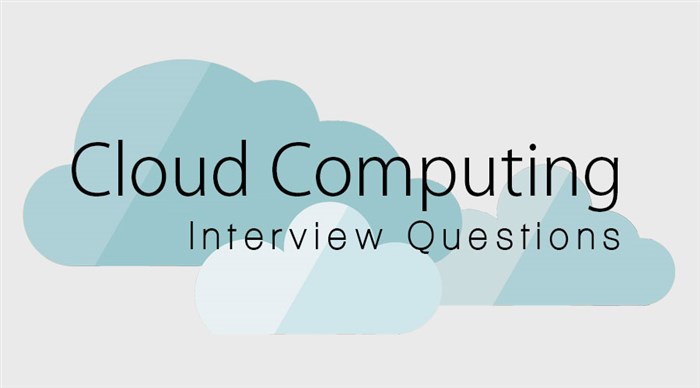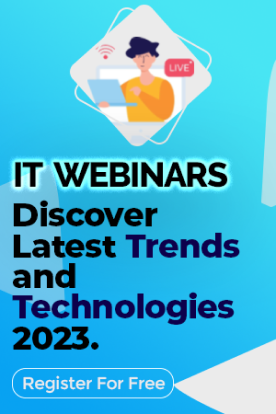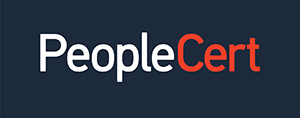We're open through the holidays to support your upskilling goals — book your session today!
We're open through the holidays to support your upskilling goals — book your session today!
Unable to find what you're searching for?
We're here to help you find it
In 2020, more than 3.6 billion people were actively using cloud platforms and services in some form or other. Cloud computing is one of the most popular domains in the IT industry today. The demand for skilled cloud computing professionals is also increasing rapidly. As a result, cloud computing certifications have also become quite prevalent.
Cloud computing infrastructure allows users to share computing resources without any hardware restrictions. These resources range from applications and storage to deployment and development platforms and business processes. Cloud computing simplifies computing resource applications through automation and standardization.
While preparing for a cloud computing job interview, here are some of the most common questions that you must familiarise yourself with for a higher chance of getting the job.
Cloud Computing Interview Questions You Should Know:
Q1. Name a few key features of cloud computing.
Cloud computing comes with a host of features and functionalities. Some of its key features are:
Q2. What are cloud delivery models?
A cloud delivery model is a structural model representing a cloud computing environment. The primary cloud delivery models today are:
- IaaS (Infrastructure as a Service) - This refers to request-based provisioning and delivery of services like storage, operating systems, networking, and utility software solution elements.
- PaaS (Platform as a Service) - PaaS is a cloud delivery model designed to combine IaaS with abstract middleware services, deployment tools, and software development. This provides organizations with a consistent method of creating and deploying apps within on-premises or cloud environments.
- SaaS (Software as a Service) - SaaS refers to business applications built and hosted using a multi-tenant hosting model by the provider.
- FaaS (Function as a Service) - FaaS provides businesses with a platform where they can build, manage and deploy application functionalities without worrying about infrastructure maintenance. The Function as a Service model makes serverless architecture a reality for enterprises everywhere.
Q3. How many versions of cloud platforms exist? What are the differences between them?
Based on deployment, there are two primary cloud models - public cloud and private cloud.
Q4. What are the key constituents within a cloud ecosystem?
Various constituents work together to influence how a user views the existing cloud architecture. These are:
A direct customer generally reaps benefits from the services your business has made in a cloud environment. The end-users of this service are unaware of whether you are using a private or public cloud. As far as these users know, they have been interacting with the services directly.
Q6. Who are the cloud service providers within cloud ecosystems?
A cloud service provider is a commercial vendor or enterprise that builds its cloud capabilities. Cloud service providers sell their offerings to cloud consumers. On the other hand, another organization might choose to be a cloud service provider internally for its partners, customers, and employees, either as a profit center or internal service. A cloud service provider also creates services or applications for such an environment.
Q7. What do you know about the architecture of cloud computing?
Cloud computing architecture refers to the combination of every component in a cloud computing model that fits together from the perspective of the infrastructure. No matter the requirements of a particular constituent of the cloud environment, it’s vital for businesses to put together the right kind of offerings that will be able to support both external and internal users. The management of consumers and users must ensure the ready availability of services to support changing business requirements. The middleware, infrastructure, services, and applications that have been created based on on-premise modules of computing fall under this category. Additionally, the computing model also depicts a cloud auditor’s role accurately. The enterprise offers oversight through an external or internal group to ensure the consumer group meets the required obligations.
Q8. What are the different levels of cloud storage?
A cloud storage device mechanism provides several common data storage levels. These are in the form of:
- Files: Data collections that have been grouped into files stored in folders
- Blocks: The smallest data unit that is accessible individually, the lowest storage level situated closest to the system hardware
- Datasets: Sets of data organized into delimited, record, or table-based formats
- Objects: The organization of data and all the metadata associated with it into web-based resources
Each of these data storage levels is affiliated with certain types of technical interfaces. This corresponds to particular types of cloud storage devices and services used to expose the API.
Q9. What are cloud-enabling technologies?
Of all the technologies that exist today, various domains are contributing to the cloud-based platforms we know and use. These technologies and areas are called cloud-enabling technologies, with the most widely used ones being:
Q10. What is the role of microservices in a true cloud environment?
Microservices are critical for true cloud environments. This can be attributed to four reasons:
Cloud computing interview questions have evolved and transformed over time. However, these remain the most fundamental questions that are almost certainly asked in some form or other. By preparing for these, you will have a strong foundation to answer other questions in the interview as well.

Michael Warne is a tech blogger and IT Certification Trainer at Koenig Solutions. She has an experience of 5 years in the industry, and has worked for top-notch IT companies. She is an IT career consultant for students who pursue various types of IT certifications.










